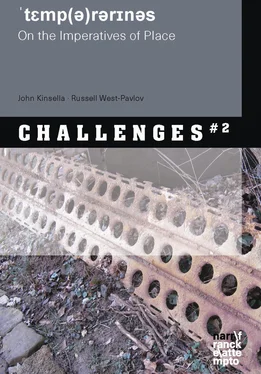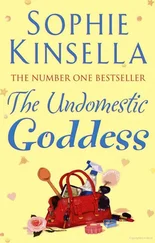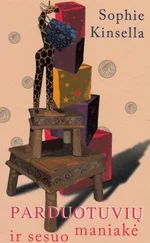The matting is a living entity—yes, living: it moves, it acts, it interacts, it signifies, indeed, it is also a site of feeling. It is an emblem of affect—that powerful attractive force that operates at the somatic, visceral level and connects entities, alive or half alive, human or nonhuman, to each other, in ways that cause them to change in the course of the encounter—if only then to disengage, transformed, ready to enter into a new transformative dialogue with a new interlocutor, and on and on, in an endless creative process of connections, deconnections, reconnections. The matting I have photographed is both a visual metaphor of the affect-ridden, affect-driven world we live in and an indexical manifestation of its ‘relational pull’ (Eckstein 2017) because I have been drawn to photograph it.
Yet at the same time, it is also an index of the no-less powerful forces in our world that seek to exploit, divert, pervert and destroy the immense fabric of creative relationships that make up the cosmos: war, environmental destruction, the necropolitical annihilation of humans, animals, the forests and the earth itself. These forces also exert a powerful, sinister and unsettling fascination, meaning, if nothing else, that we can never claim we are not complicit in these ubiquitous processes of destruction (Sanders 2001)—even if that uneasy knowledge founds and fuels our dogged resistance to such forces. This play of positive and negative affects means that even our moral stances, our political engagements, are not permanent places to stand, but temporary site of resistance that in this ongoing war of manoeuver must constantly be reassessed and renewed. No theory, no manifesto, no work of art, is permanent or eternally sufficient. Each of them serves a purpose for a period of time and then, as circumstances change, must be replaced by another one that is more appropriate.
That is why, in writing this book, John and I have implemented the genre of the collage of micro-essays. The book is made up of units that, not unlike the steel matting, can be combined and recombined at will with other units. We have chosen a particular sequence, but of course you can take the fabric of matting apart and put it back together in another sequence or collage as you wish. Indeed, in the process of writing, we have constantly tried out new permutations and combinations of the units making up this book, slotting them together in ever new configurations.
Similarly to the sheets of steel matting, each of the textual units is porous. The perforations reduce the weight of the steel matting. Likewise, the essay has a certain lightness that eschews monumental and the exhaustive modes of academic writing—attributes highly valued in the Germanic academic system in which I work, where the essay, according to Adorno (1991: 3-4), is a subaltern and subversive genre. This lightness arises from the fact that the essay seeks to maintain an open structure that communicates with its environment. Iconoclastically, the essay refuses the customary distance between scholarly observer and the object of commentary. It thus threatens, however discretely, a tradition of ‘science’ (‘Wissenschaft’) that legitimizes its gravitas on the basis of objectivity, that is, non-involvement with its objects of study. It’s a good century since quantum theory recognized that no scientific experiment can take place without the necessary precondition of the ‘entanglement’ of, respectively, observer, scientific instrument and the natural phenomena under investigation (Barad 2007). Yet the essay still creates a stir by virtue of its mixing of the distanced mode of academic commentary and the participatory mode of creative connection—by virtue of its contamination of academia with art.
In its very generic features, the essay is a hybrid genre, thereby advertising, performatively, the nature of its task. Adorno (1991: 14-15) identifies the essay as a genre that is inherently inimical to Descartes’ dictates about the functioning of analytical reasoning at the dawn of the modern—and beyond, right up to the present day. Analysis, for Descartes, divides the problem into a number of atomized elements that can then be addressed one by one. The principle of divide and rule in the world of polemical thought. Or the principle of the anatomy lesson, that violently takes the body apart in order to understand its workings. The essay, itself at first glance a fragment rather than a whole, does none of this, says Adorno. It addresses an issue in its entirety, in its complexity, without seeking to dissect it and thereby reduce its living, organic complexity. By the same token, it renounces any form of totality or exhaustiveness, contenting itself with the contingent, the provisional, the temporary—in other words, the only sort of encounter that can be had with a dynamic, actantial Other.
In this book, our essays, themselves dynamic entities, enter into a dialogue with one another. Within that conversation, the essays, apparently stable in their black and white adhesion on the page, are in fact transformed by the manifold and shifting connections that the intelligent and alert reader, if she listens carefully to their subterranean or submarine murmur, will hear them making among themselves. Indeed, although we have orchestrated these pieces in a certain configuration, John and I have constantly been surprised by what the micro-essays get up to among themselves when our backs are turned. Accordingly, we have been reminded, time and again, of Thoreau’s (1908: 8) words: ‘We are made to exaggerate the importance of the work we do; and yet how much is not done by us!’ We are aware that our own configuring work leaves ample space for the essays to work their own magic and weave their own connections without our help.
But that is not all. The essays seek to engage in turn with their environment, to be open to the world. One might imagine the steel latticework as a material icon or a very objective correlative of the written text—its lateral corrugations mimicking the lines on the page and the perforations the chain-like sequences of the words themselves. Conceived of thus, it is striking that in this visual simile both lines and words are staged as absences: the lines are long open grooves and the words have literally been punched out on the production line. Both are open to the air. The steel matting provides a literal visual metaphor of what Eco (1989) called ‘the open work’. Literary poesis, and by extension, intellectual creation, does not result in an autotelic, autonomous work of art or a hermetically sealed work of scholarship. Rather, from the outset it is engaged in a constant dialogue, from the smallest unit of the letter or the phoneme, with its neighbours. The visual metaphor of the steel latticework, even though it portrays an artefact that is independent and may travel, suggests a notion of creation that eschews the paradigm of Saussurean difference. Rather, it imposes a notion of interrelationship as the driving force and the underlying precondition of artistic creation and inquiring thought. Each of these essays seeks to communicate with its neighbours and could not exist alone. Each one entertains a myriad of vital connections to the earth, to the forest, to animals, to other walkers, to the wind and the clouds.
To that extent, this collage of essays stands, in the manner of a complex synecdoche, for a worldliness that we believe is the only viable mode of being for the humanities if they are to survive as part of the educational institutions of the future. This book is a plank—modular, open-ended, dialogical, contingent—in a programme for a temporal (as opposed to spiritual) humanities that has yet to be invented, but we believe to be our only chance for saying something of relevance in the era of multiple global crises that forms our dangerous Now.
Читать дальше












